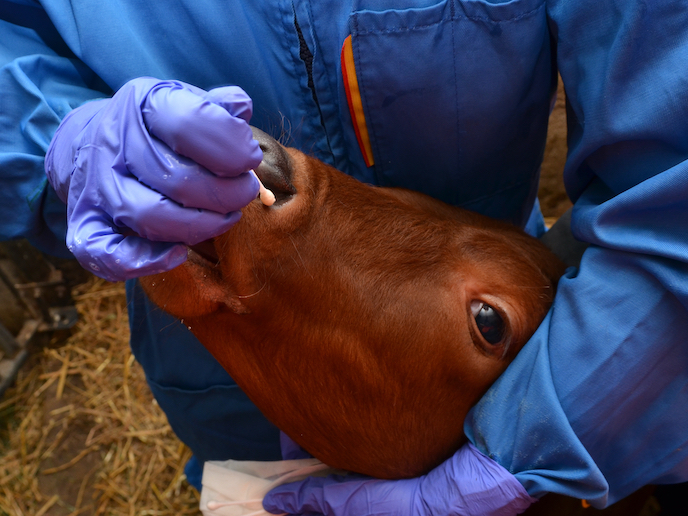This tiny bacterium could have a big impact on human and animal health
Mycoplasmas are the smallest single-celled organisms on Earth. These bacteria are parasites that cause atypical pneumonia in humans, and many serious diseases in livestock(opens in new window), including bovine pleuropneumonia, contagious agalactia in small ruminants, and respiratory illness in poultry. However, Luis Serrano, director of the Centre for Genomic Regulation(opens in new window) in Barcelona, Spain, is hoping to put the bacteria to good use. The EU-funded MycoVAP project sought to use a non-pathogenic strain of Mycoplasma pneumoniae to break up bacterial biofilms that underlie ventilator-associated pneumonia (VAP) in hospital patients. Up to a quarter of intubated patients develop VAP, caused in part by Pseudomonas aeruginosa or Staphylococcus aureus bacteria which form tough patinas on the surface of medical tubes. “Biofilms are very resilient against antibiotic treatment, as antibiotics cannot access the bacteria, and as the bacteria are not dividing, the antibiotic does not attack,” explains Serrano. Mycoplasmas(opens in new window) do not have cell walls, so can be used in combination with antibiotics such as penicillin that kill other bacteria by targeting cell wall synthesis. “We engineered bacteria to dissolve the biofilm. The bacteria secrete enzymes which destroy the biofilm and toxins which kill the bacteria,” says Serrano. However, this is not the only use the team have found for their bacterial helper. Having isolated a Mycoplasma pneumoniae and engineered it to be non-pathogenic, they added surface proteins from other, more dangerous strains of the bacteria. Serrano explains: “The idea is to develop a single bacterial vector that could be used to vaccinate against many different animal diseases, especially infections caused by mycoplasma species.” He adds that, as many mycoplasma species are difficult to grow in the laboratory, it has been hard to develop vaccines against them. Creating one species that grows well in the lab, and using it to vaccinate against multiple strains, offers an elegant solution. “If we have antigens on one easily-grown species, we can save a lot of time and energy,” adds Serrano. The team plans to move forward with clinical trials of the two engineered bacteria in the next year. Naturally, the bacteria are likely to be approved for use in animals before it becomes available for human patients. “We didn’t expect to create a therapeutic vector for humans,” he notes. “We were working in animals – we’re testing now in pigs and cattle. It’s easier in animals, but we need to compare the treatment to existing vaccines.” The project was supported by the European Research Council(opens in new window) (ERC), without which, says Serrano, the project would not have been possible. The funding gave the team to freedom to explore different uses for the engineered mycoplasma that otherwise would not have happened. “We’re now exploring the possibility of using bacteria modified for lung cancer and lung disease,” says Serrano, explaining that the mycoplasma could be modified to secrete antibodies or proteins that target the tumour. “The most important message is that on the way to studying one thing, you find many new interesting things. This is why science is exciting.”







